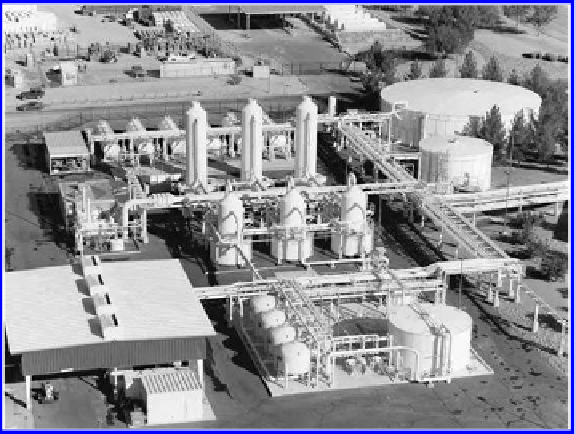Environmental Engineering Reference
In-Depth Information
projects at the Tucson Earth Day Festival. The festival has become the region's largest Earth Day
event. Most recently, the UCAB sponsored and supported the development of a middle and high
school curriculum that introduces local students to the history of the site and examines the social,
scientii c, and political ramii cations of the groundwater contamination.
Despite the progress the USAF has made to build trust among community members, the USAF
continues to be challenged by shifting community attitudes about those responsible for the Superfund
cleanup. In addition to i ling lawsuits over health effects, some community members continue to
distrust (or have become distrustful of) the USAF, other government agencies, or others responsible
for the cleanup.
8.7.5 R
EMEDIAL
A
CTIONS
In 1986, the USAF released a Remedial Action Plan (RAP) that proposed groundwater extraction,
treatment, and reinjection to address the contamination at the south of Los Reales Road (USAF,
1986). Construction of the groundwater treatment plant (GWTP) began that same year (Figure 8.12).
This “Groundwater Reclamation System” was intended to reduce or eliminate off-site migration of
TCE and other chlorinated VOCs from AFP 44. The well i eld is designed to contain and remediate
the southern half of the TIAA Superfund Site contaminant plume, which formed in the upper zone
of the regional aquifer. A separate remediation system, referred to as the Tucson Area Remediation
Project (TARP), handles the northern half of the plume, which includes solvent contamination ema-
nating from the Tucson Airport property and 1,4-dioxane that may ultimately be determined to be
coming from the airport as well as AFP 44. The regional aquifer in the Tucson Basin is a heavily
used drinking water source, so restoring the contaminated part of the aquifer is a very high priority
for the USAF, local governments, regulatory agencies, and the community.
The AFP 44 well i eld utilizes extraction and injection wells across a 2-square-mile area to achieve
hydraulic containment of the contamination plume by extracting groundwater from the center of the
plume and reinjecting it along the outside perimeter of the plume. This reinjection was mandated
because the site is within the Tucson Active [groundwater] Management Area, which requires that
groundwater extraction does not result in an overall decline in available water resources in the sole
drinking water aquifer for the City of Tucson. In April 1987, the GWTP began to extract and treat
groundwater at a capacity of approximately 5000 gpm. This l ow rate was reduced over time, based
on MODFLOW groundwater modeling results, to optimize capture while minimizing the quantity of
FIGURE 8.12
Aerial view of Air Force Plant 44 GWTP.

Search WWH ::

Custom Search